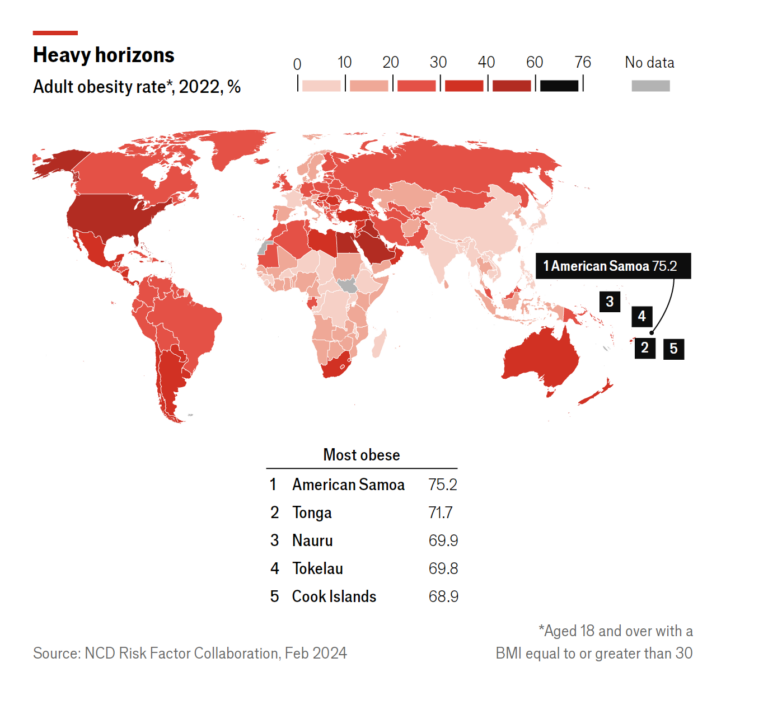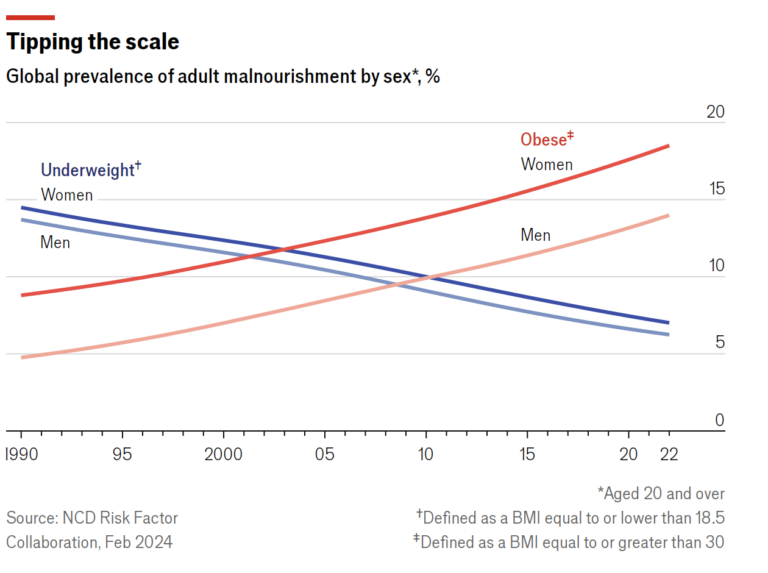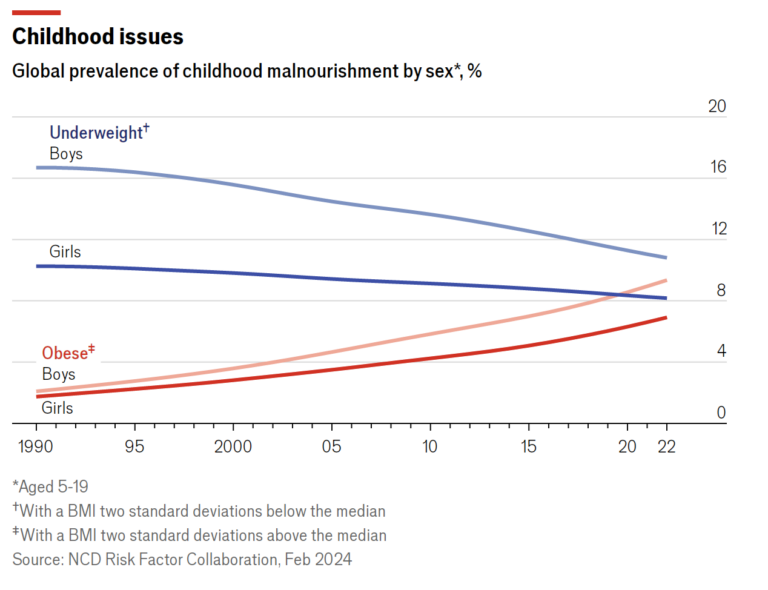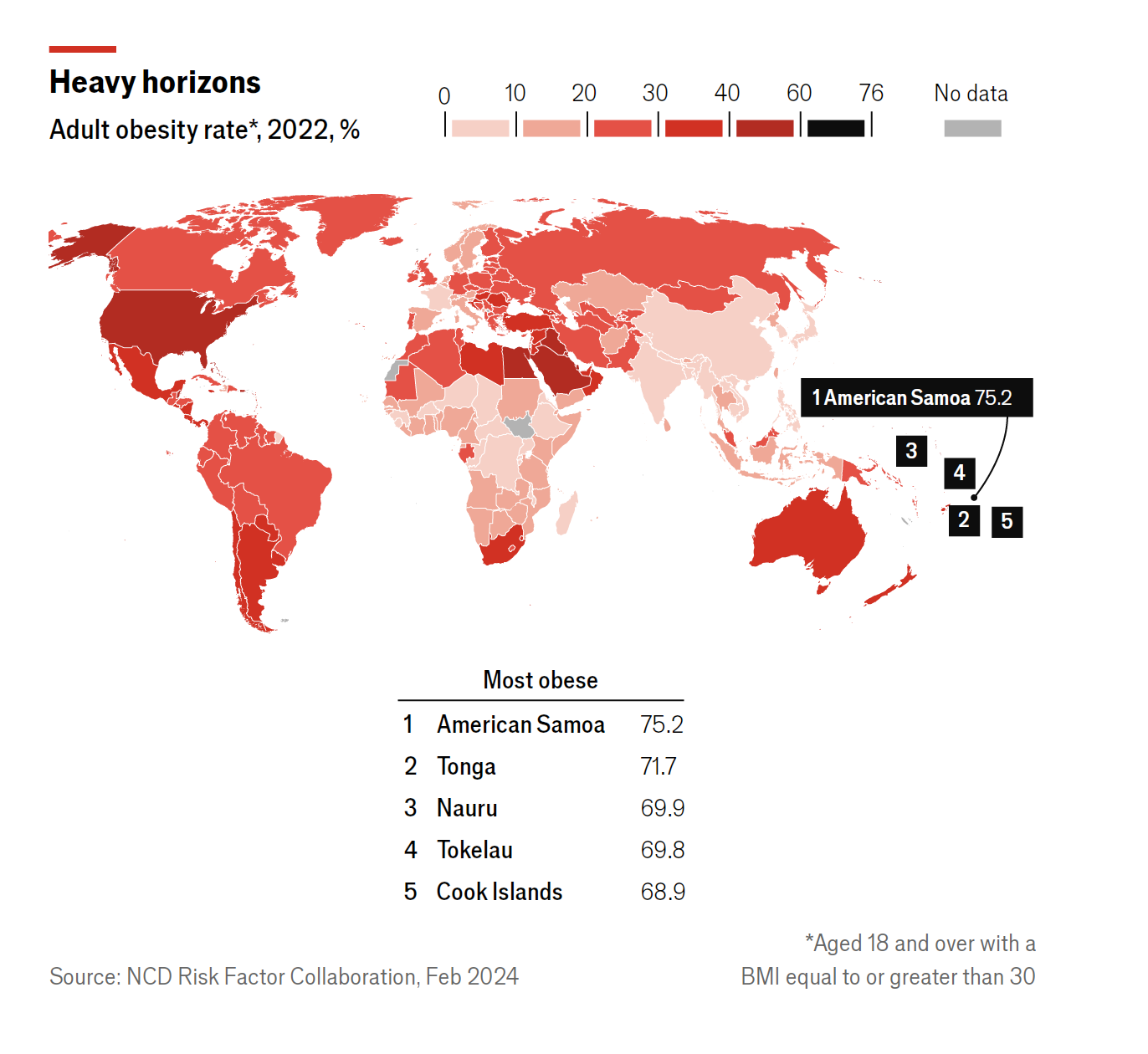It was not that long ago that more of the world’s people had too little to eat than ate too much. Now the scales have tipped. A study published on February 29th in the Lancet, a medical journal, shows that more than 1bn people were classified as obese in 2022, the latest year for which data are available. The researchers based their findings on the weight and height measurements of more than 220m people from roughly 190 countries. They found that obesity rates have doubled among adults since 1990 and quadrupled among children and adolescents. Our map below shows which countries have the highest rates.

Obesity is typically determined by the ratio of weight (in kg) to the square of height (in metres), known as the body-mass index (BMI). In this study a BMI above 30 is considered obese. The measure is imperfect (most bodybuilders, for example, would be classified as obese because of the weight of their muscles, despite having very little body fat). But it is a useful rule of thumb. Studies have shown that most people with a BMI over 30 are significantly more likely to suffer from conditions like diabetes than those with a BMI of 23. Higher BMI is also known to increase the risk of more than a dozen types of cancer. In these and other ways, obesity is thought to kill around 4m people each year.
The analysis finds higher obesity rates in low- and middle-income countries than in many high-income ones. More than 60% of adults in Polynesia and Micronesia were living with obesity in 2022—the highest rate in the world. This is likely to be a result of changing diets and a culture that puts a value on size. Tonga had the highest rate for women (81% were considered obese); American Samoa had the highest for men (70%). Countries in Africa and the Middle East, historically associated with undernourishment, are now also struggling with weight gain.

Turkey was the obesity capital of Europe for women, with a rate of 43%. For men it was Romania, at 38%. French women and men were the most slender in the region—only 10% were considered obese. The rates were four times higher in America, where 44% of women and 42% of men had a BMI over 30.
Global obesity rates now significantly exceed the share of adults who are underweight (a BMI under 18.5). The number is creeping up for children and adolescents, too. The study found that obese children outnumbered underweight ones in two-thirds of the countries studied. In rich countries childhood obesity is concentrated in poor families. But in poor countries it is a middle-class problem—so as average incomes rise, more children are moving into the overweight category. Many poor countries are now facing a “double epidemic” of malnutrition and obesity.

That so many people are struggling with their weight shows that obesity is more than a matter of dietary willpower. The human body has evolved to survive winters and famines: it is designed to cling on to body weight and will resist efforts to lose it. A superabundance of cheap, ultra-processed foods has also triggered overeating just as lifestyles have become more sedentary. Weight-loss drugs are starting to arrive, but remain prohibitively expensive for most. With time they may start to help countries nibble away at their obesity problems. But reversing these trends will require preventing more children and adults from getting fat in the first place. That will need intervention from governments—which both politicians and voters will find hard to swallow.■
Excerpts: The Economist




COMMENTS